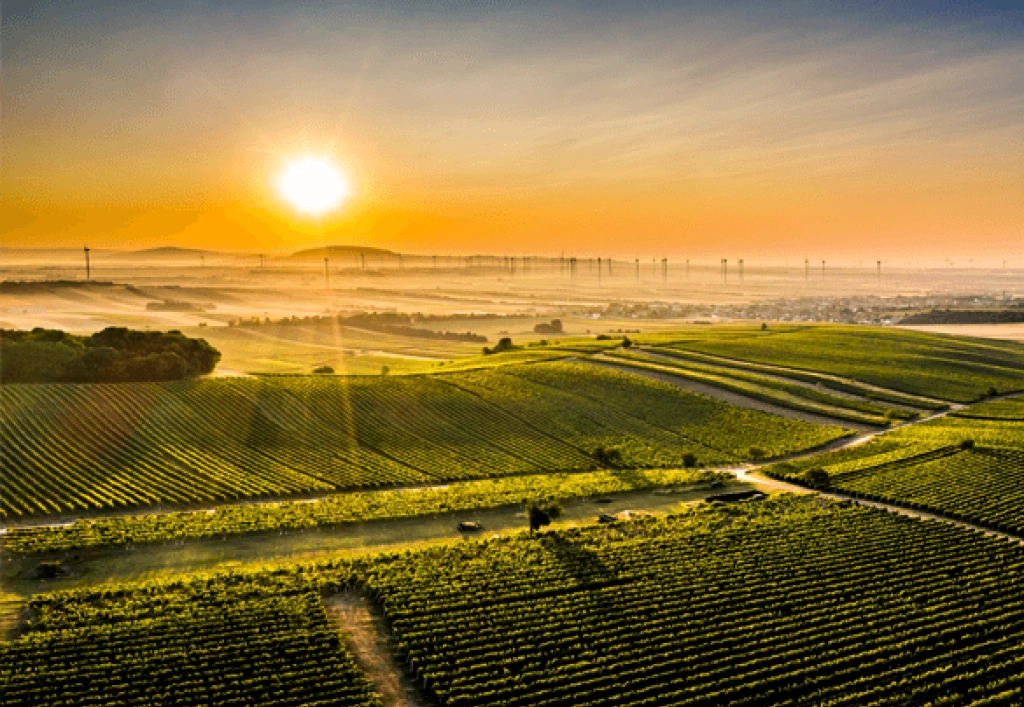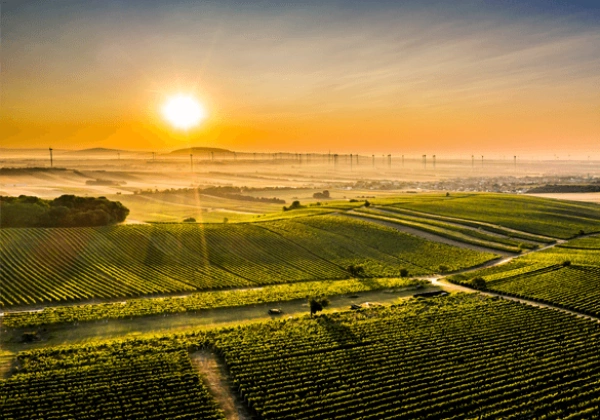Some twenty million years ago, the Alps split off from the Carpathian Mountains. The resulting gap between the great mountain ranges is called the Brucker Pforte, which lies between the Leitha Range (Alps) and the Hundsheimer Mountains (Carpathians), connecting the Pannonian Plain with the Vienna Basin. Powerful winds roar through it year in, year out, rendering Carnuntum one of the most arid regions in Central Europe, nakedly exposed to the continental climate. The moderating influence of Lake Neusiedl can no longer be felt here. Temperature swings between day and night, and the differences between summer & winter, are striking. Driving from west to east, one also notices the temperature rising significantly.
With exactly 906 hectares currently under vines, Carnuntum is indeed one of the smallest winegrowing regions in Austria, but one in which the soil formations are particularly diverse. The reason for this goes back many millions of years.
How the primordial Danube set the stage for viticulture
Breakers of an ancient sea, the Paratethys, washed up on today’s Alps and Carpathians until about sixteen million years ago. We can picture the Hundsheimer Range as the ancient seacoast, hence the limestone soils of Prellenkirchen and Hainburg.
When the primeval sea retreated, extensive watercourses emerged, which later came together to form rivers. These rivers underwent further changes a few more times – for example, the Danube once flowed via Hollabrunn and Mistelbach, crossing the Brucker Pforte in a southeasterly direction, before it assumed its current path through the Lesser Carpathians.
This ancient course of the river can still be seen in Carnuntum today: a long strip of large pebbles polished round runs along a gentle curve of the hillside. Loamy soils, the alluvial land of the erstwhile river bank, are the next geologic feature to present itself. This distinguishes, for example, the neighbouring Ortswein (village wine) of Höflein (gravelly) from that of Göttlesbrunn (loamy), while the Ortswein from Petronell-Carnuntum grows on sandy-pebbly soils. Stixneusiedl, on the other hand, enjoys its special position: a massive wall of loess covers the gravel soils and imparts a very special freshness to the wines.
The Geology Project
Of course, winegrowers had known for a long time that the wines from the different parts of Carnuntum exhibit different flavours. But it was only after an intensive four-year project investigating the soils had been carried out in cooperation with the Geology Institute that the background became clear. Soil physics and water balance (permeability of the soil), soil chemistry, geology (soil types), geochemistry (soil analysis) and geophysics (soil resistance) were analysed and finally provided results that corresponded to the experience of the winegrowers. They then served to articulate the process of identifying origins in Carnuntum, to assign the different terroirs to six Ortswein (village wines) and to determine the grape varieties of the Carnuntum DAC regulation.
Which grape varieties are ‘typical Carnuntum’?
Each grape variety places its own particular demands on the environment. Zweigelt & Grüner Veltliner require soils that retain moisture even during the long, hot and very arid summers. That is why they are planted in Carnuntum on the loamy soil of the former Danube watercourses and on lake shores, so that the vines can optimally supply their grapes with moisture. These varieties also thrive on thick layers of loess. Chardonnay & Weissburgunder feel quite at home on the strip of gravel & pebbles along the former course of the Danube. In addition to their flowery ripeness, they also show a firm minerality here. The fine, sandy limestone soils of the onetime seacoast and lakeshore, however, offer an ideal environment for Blaufränkisch. On these higher-elevation slopes of the Hundsheimer Range, the meagre soils pose a real challenge to the vine, but precisely because of this, an incomparable & individualistic character develops here.







